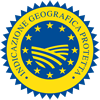Description
The Riz de Camargue PGI includes the following rice types: Brown rice (semi-raw), White rice, Paraboiled rice, Pre-cooked rice and Rice made up of the mixture of these products.
Production Area
The Riz de Camargue PGI production area is located in Camargue (Camargue Gardoise, Petite Camargue, Petit and Grand Plan de Bourg), a humid region placed in the Bouches-du-Rhône and Gard departments, in the Provence-Alpes-Azur and Languedoc-Roussillon regions.
Production Method
The first phase of cultivation is the preparation of the land in the period between October and April. Fertilization is made before sowing, which takes place between April and May. The harvest is strongly tied to climate conditions and maturity of the selected varieties. The product is stored in silos with controlled temperature and humidity. The Riz de Camargue PGI is selected in the phases: during cleaning, drying, husking, selection, calibration and production. These phases allow classifying rice according the following parameters: origin, family, humidity, crushing, inert matters, qualities or production levels, maturity, damaged or heated grains, sanitary aspects, production degree.
Appearance and Flavour
Riz de Camargue PGI has a thin slender grain, but not very long, of white or brown colour, brown or refined. Each product type is also distinguished by particular characteristics.
History
Riz de Camargue PGI is a fruit of an ancient tradition. The most remote footprints of rice growing date back to the 13th and 14th centuries, while modern history starts in the 19th century after Rhône containment in 1855. In the 1970s, there is a production decrease due to the scarce profitability of cultivation. To raise production again, in 1981, a relaunch plan was introduced together with the hydraulic network restructuring, essential for the ecological balance of the area.
Gastronomy
Dried Riz de Camargue PGI has a good storability if kept protected inside its packaging in a dry room. It is eaten only after cooking, which can be carried out with different methods: stewed, pilaf or with steam, by just adding the double proportion of water in relation to the rice weight, or vegetable or meat broth. Then, other dressings and flavour enhancers can be added. It is a side-dish of meat and fish; it can be seasoned with sauces and hot or spicy sauces, with curry sauce and onion. It is also used as base for dessert preparation such as more or less creamy rice puddings, with the addition of candies and honey.
Marketing
The product is sold as Riz de Camargue PGI Brown rice (semi-raw), White rice, Parboiled rice, Precooked rice or Rice made up of the mixture of the previous. It is marketed packed in cloth bags or vacuum-packing, in packages between 500 gr and 1 kg.
Distinctive Features
Rice cultivation is the base of Camargue ecological balance due to the ground composition and salted underground, together with the hot and dry climate. These factors, combined with a reduced number of storage centres, help to guarantee the quality of Riz de Camargue PGI.






